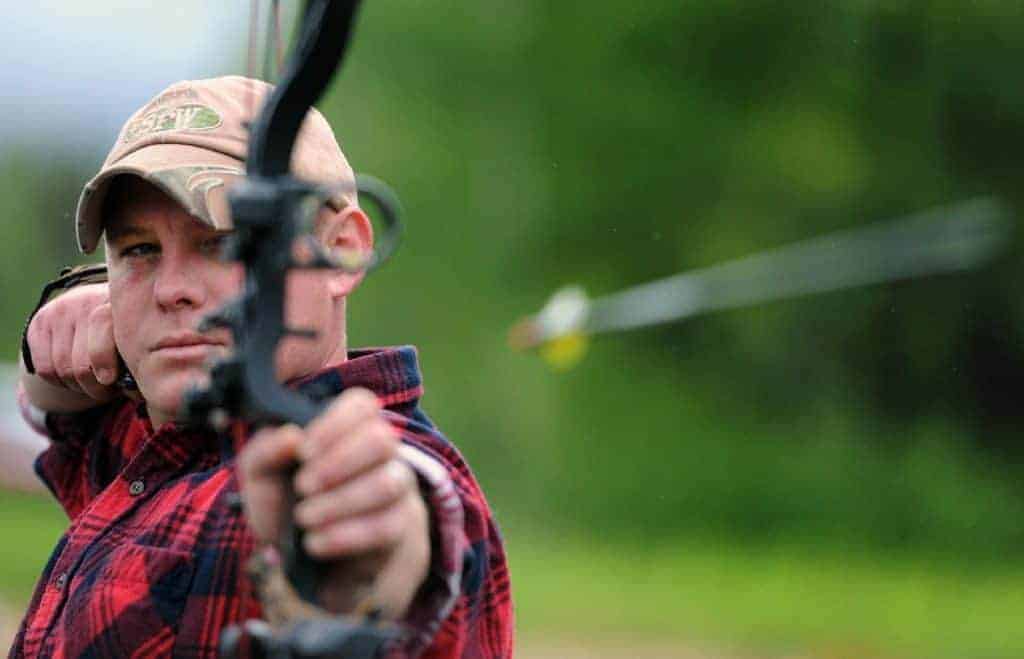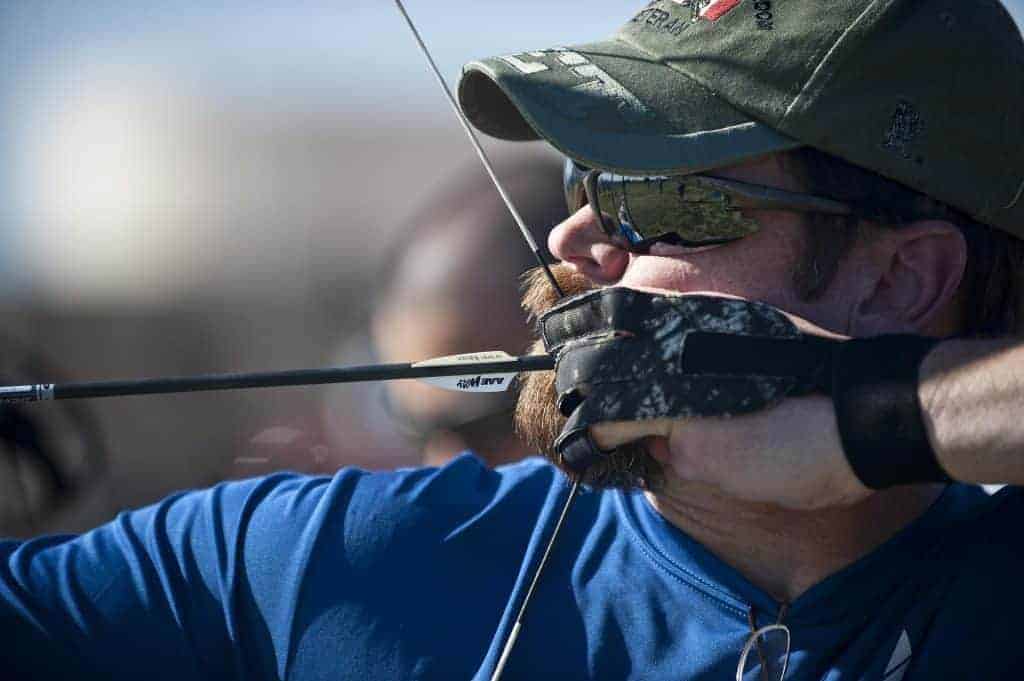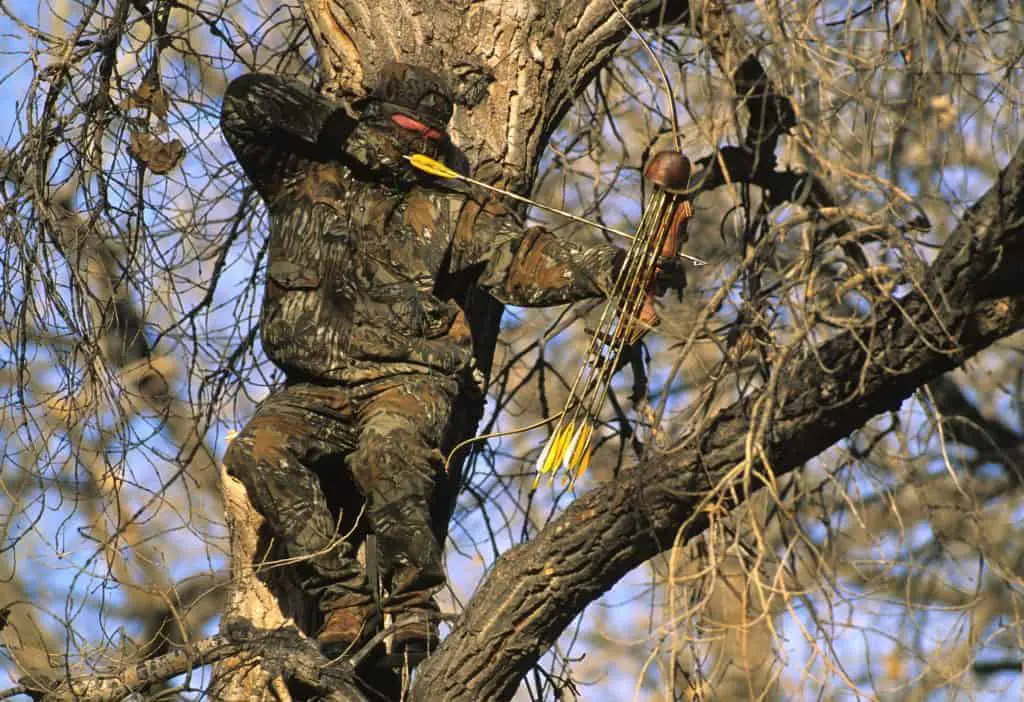This article is evidence-based and verified by Blake Conner, Certified Strength, and Conditioning Specialist.
Bowhunting is an amazing sport. It returns to the roots of our primal days of hunting with primitive weapons. Instead of the modern firearm, there is the elegance that comes with bow hunting. What is so cool about bow hunting is that it is also a very physically demanding sport.
Depending on the bow you are using, there is a level of strength needed to even pull the bow back into the draw position. From there, you need the stabilization to even hold it steady. Most bowhunters are also on foot for most of the hunt, which can bring some level of hiking, tracking, or even climbing.
As you can see, this is more of a sport than just a leisure activity. There are even professionals who bow hunt as a career. With this comes a certain level of conditioning that is required. If you are wanting to be the best bowhunter around, then you are going to need to be physically prepared to do so.
So, here are ways in which you can practice strength and conditioning as a bowhunter.
In this post, we'll cover:
General to Specific and The Build
When we are talking about any kind of strength and conditioning, you need to keep in mind how these concepts even work. There are two ways to approach this. You can approach this from a general standpoint, or you can come at it from a specific standpoint. Both of which have a place when preparing for a sport.
When referring to general training, this is going to be more of a foundation. So, we are going to focus more on your ability to move well, your general strength, and your cardio base. All of these need to come first before we start to work on more specific things.
These are going to be done more so in a traditional gym setting doing, well, normal people things. Using free weights, machines, and even bodyweight movements.
Specific training has a stronger emphasis on training for that one particular thing. For bowhunting, it is going to focus on your draw strength and stability. Whereas a baseball player may focus more on swinging the bat and his ability to do just that. See the difference?
There is also a certain build that you are going to want to attempt creating for yourself. This is going to make bow hunting easier and more efficient for you. Not everyone is going to have the perfect build for this sport, but we can at least work to recreate it in our own way.
For example, the famous bowhunter Cameron Hanes . He is a fitness legend and is a strong advocate for being physically fit for bow hunting. His build is very muscular and has strong support behind the bow. Steve Rinella
. He is a fitness legend and is a strong advocate for being physically fit for bow hunting. His build is very muscular and has strong support behind the bow. Steve Rinella is another great example. He is an avid outdoorsman with years of bowhunting under his belt.
is another great example. He is an avid outdoorsman with years of bowhunting under his belt.
He takes great care of his body so that he can track, hunt, and clean what he wants for dinner. We also can’t forget the strong and powerful women of the bow hunting profession. Eva Shockey is a very well-known bow hunter and outdoorswoman. She takes care of herself and ensures that she is physically fit to do the job that is presented to her (1).
is a very well-known bow hunter and outdoorswoman. She takes care of herself and ensures that she is physically fit to do the job that is presented to her (1).
All three of the bowhunters put a strong emphasis on staying in the shape they need for hunting. They all have strength, endurance, and stability. Oh, and don’t forget a strong mental capacity as well!
So, as we progress through this article, keep these in mind when it comes to the kind of training and the type of build that we are looking to recreate.
How to Improve Bow Draw Strength

When we look at someone actually shooting an arrow, we can see that it isn’t easy. There are a ton of muscles that are involved in the process. The back and arms are used to actually pull the bow back.
Then the shoulders are used to stabilize that position until you are ready to release. The core is used a ton as well so that you can maintain this almost isometric position.
That’s three large areas of muscle that are being used just to draw the bow back! So how do we train to get stronger with our draw?
General Training for Bowhunting
You need some form of general training as we mentioned before. This is going to be in the form of pulling strength, shoulder stability, core strength, and grip. All of these can be trained in a very general sense to help build yourself a foundation to work upon.
To start, you need to be doing exercises such as pull-ups and rows. Any sort of vertical or horizontal pulling motion is going to help strengthen the back, which is an integral part of your bow draw. When doing so you can even imagine pulling from the elbow just like you would with a normal bow draw. It all translates over.
From there you need to get some general stabilization of the shoulder. The shoulder is made up of multiple muscles, so it is easy to have the larger ones take over, while the smaller ones become neglected. Meaning, you need to do smaller exercises that hit those smaller muscles.
This can be as simple as working on your rotator cuff strength. Lightweight mixed with minor movements that force the activation of those little muscles. This will help to reduce injury risk as well.
Core strength is needed for actually staying steady in the draw. As you aim, you may feel that you want to shake or release. However, you may need to wait for the perfect moment to fire that arrow. When you have a strong core, you will be able to maintain this position for a longer period of time.
A general approach to training the core would be to do some static holds such as an elbow plank, hollow body hold, or anti-rotational hold. This will build a strong core than stabilize through a bow draw.
The grip is interesting. Some people are born with a great grip and others need to develop it. Sometimes the size of the hand matters, but for bow hunting, it should not. Unless you use a tool to hold the string in the draw, you are going to need strong hands. Some bows have a ton of force behind them and this can be difficult to hold.
So, you should be training some sort of general grip strength. This can easily be done by utilized plate pinches, farmers carry, or just hold any odd object for an extended period of time. The small muscles in the hand that are responsible for the grip will eventually become a lot stronger. Thus, you will have gotten better for your draw.
Those are some great general ways to improve strength for your bow draw. Now, let’s discuss some more specific ways in which we can improve.
Specific Training for Bowhunting
As stated before, there are ways to more specifically train for the draw. These are going to include exercises or activities that really mimic the act of drawing the bow back.
Practice it! There is no better way to get used to or better at drawing a bow than to actually do it. This can come in the form of reps. Go to a range or set up a target for yourself and practice shooting. Each time, your body will get more efficient and stronger at this one activity. You’re never the best at something the first time you do it. It takes practice to get good at something and you will have noticed a difference from the first time to the 100th time.
Being specific can also mean getting creative. You could use a cable machine and practice holding the drawback position. This provides you with some resistance that is similar, or even more difficult than the actual bow. The body will react, and you will get stronger.
The next time you go to draw back on a normal bow, you’ll be surprised at how much easier it feels. You can see this concept being used by baseball players when they swing with heavier bats. This makes the body aware and adapts to the stressor being put on it. Now that it is used to the heavier version, the normal will feel lighter.
How to Improve Endurance for the Hunt
For most, hunting with a bow involves some sort of hiking, climbing, and walking. This can be very taxing on the body and isn’t easy. There is a certain level of endurance and cardiovascular health that is needed to successfully hunt.
You are going to have to get specific with what kind of hunts you are doing. Are you going on short periodic hunts? Or are you going on long, drawn-out hunts? This is going to determine what kind of training you do.
If you are doing shorter hunts, maybe you wait in a stand all day, and the only walking you do is to leave. This isn’t going to require as much of a base as if you were doing a hike. So, the average joe can do well with just whatever fitness level they possess.
Now, if you are going on hunts those last days, and you are actually tracking and trailing an animal, that’s a different story. This isn’t for the faint of heart. You need to focus on building up your aerobic base. This can be done easily with some intentional work. Running is great. This will help to train the heart to handle that kind of stress.
As you become more efficient, you will notice that tracking an animal is a lot easier. I also suggest you replicate the work you will be doing. If you are hiking some mountainous terrain, then you would benefit from some intentional hikes in that same environment. The best way to prepare is actually to prepare for what is ahead.
To conclude, ensure you are getting out and increasing your endurance base. This can be done by walking, hiking, or even running. I suggest that you progress the distance or time as you get better. This will help to improve your abilities during the hunt.
Bow Hunting Fitness Program

You can work to be fit for bow hunting. It just takes some planning and some execution. We will again use the concepts of general training mixed with some specific training. I will be providing a sample fitness program that can be followed to improve your bowhunting skills.
A fitness program like this can be done roughly 3-4 times a week and should be mixed in with some actual hunting. We don’t want to overdo anything, and we need to keep your recovery in check.
Day 1: Back and Conditioning
- Lat Pull-Downs
- 5 sets of 12 reps
- Bent Over Rows
- 5 sets of 8 reps
- Rear Delt Machine
- 4 sets of 12 reps
- One-Arm Seated Cable Row
- 4 sets of 8 on each arm
- 2 Mile Walk at Max Incline
- 2 Mile Bike on Moderate Resistance
Day 2: Legs and Core
- Back Squat
- 5 sets of 5 reps
- Reverse Lunges
- 4 sets of 8 reps each leg
- Romanian Deadlifts
- 4 sets of 10 reps
- Elbow Plank
- 5 sets of 30 seconds
- Ab Roll Out
- 4 sets of 12 reps
- Hollow Body Hold
- 3 sets of 1 min hold
Day 3: Shoulders and Conditioning
- Shoulder Press
- 4 sets of 8 reps
- Dumbbell Shrugs
- 5 sets of 10 reps
- Dumbbell Lateral Raises
- 3 sets of 15 reps
- Cable Face Pulls
- 5 sets of 12 reps
- Stair Climber
- 20 minutes
- 1 Mile Run
Again, this program can be followed for about 3 days a week. You can replicate this structure with other similar movements. This will help to build strength and stability for bow hunting.
As a bowhunter, you need to be strong in the core, the back, and the shoulders. These workouts accomplish just that. There is also a leg component because it helps to strengthen the entire body.
The conditioning is also worked into this workout plan to increase your endurance for hiking and walking that is part of bowhunting.
How to Prevent Injury When Bowhunting
As with any sport or activity, you want to prevent injury. Preventing injury is the best way for you to continue doing what you love for a long time.
Now, there is, of course, the assumed risk of being injured by the weapon you are using. Accidents happen and safety should always be practiced when using any bow and arrow. However, this is to highlight injury prevention outside of the obvious.
As a bowhunter, you are trekking over some rugged terrain. This can often lead to you coming across dangerous situations. You could be alone and sprain an ankle, fall and break a leg, etc.
All of which would put you in a tough position in the wild. So, you need to make sure that you are as resilient as they come. This can be done by getting stronger. As we train for strength, we build up the tendons, bones, and joints in the body.
By doing so, we mitigate the chances of injury during a fall. Then there is the obvious choice of just being more careful.
If you do not properly strengthen the shoulders, this can result in minor tears. This may not start out as a serious injury but can eventually evolve into a much more serious problem. We can avoid this issue by properly working the small shoulder muscles. Following a similar program to the one that is mentioned above will help to keep those shoulders strong.
In this study, resistance training was able to help young individuals avoid injury. While this highlighted youth, this concept can also apply to older individuals as well (2 ). It helps to create a base of strength that can reduce injury.
). It helps to create a base of strength that can reduce injury.
Therefore, just following a simple strength and conditioning program can help to prevent any injuries that may occur from bowhunting.
Conclusion

Strength and conditioning for bow hunting are very effective. It’s an outdoor sport that requires strength, stability, and endurance. All of which can be trained for.
Depending on how serious and intense the kind of hunting you are doing, you may or may not need a more intense strength and conditioning protocol. Some individuals just hunt for fun, while others hunt for sport.
There are plenty of famous bow hunters who take their fitness very seriously. They do so to be the best at what they do. If you are looking to replicate this level of hunting, then you are going to need a similar level of fitness. They often have a particular build that you can work towards. They tend to be very strong in the back, shoulders, and core.
The kind of training you do can go from general to specific. General training is going to be simpler and can be done at a regular gym. This would include resistance training with free weights and machines, followed by some sort of cardiovascular activity.
Specific training is more tailored towards the movement you are doing as a hunter. If you are pulling back on a bow, you can replicate that with machines or weights.
Endurance is also a quality that you will need to possess to effectively pursue your hunt. The terrain can be difficult to traverse and may involve a ton of walking and or hiking. This quality can be trained for and is quite simple. Just by working up your capacity for this type of work, you can adapt.
A fitness plan can be created for around 3-4 days a week. This will ensure that you get enough training to be prepared for hunting.
If you apply all of the concepts that have been mentioned, you will definitely improve as a hunter. Bowhunting is a fun and very rewarding outdoor activity.
How To Use Kettlebells For Archery And Bow Hunting

Blake Conner is a nutritionist who graduated from Mississippi State University. He is also a Certified Strength and Conditioning Specialist through the NSCA and a certified nutrition coach through Precision Nutrition. Blake runs his own remote nutrition coaching business to help people become the best versions of themselves.
Resources
- https://bowhunting360.com/2017/07/07/8-bowhunters-you-need-to-know/

- https://www.ncbi.nlm.nih.gov/pubmed/28447880

